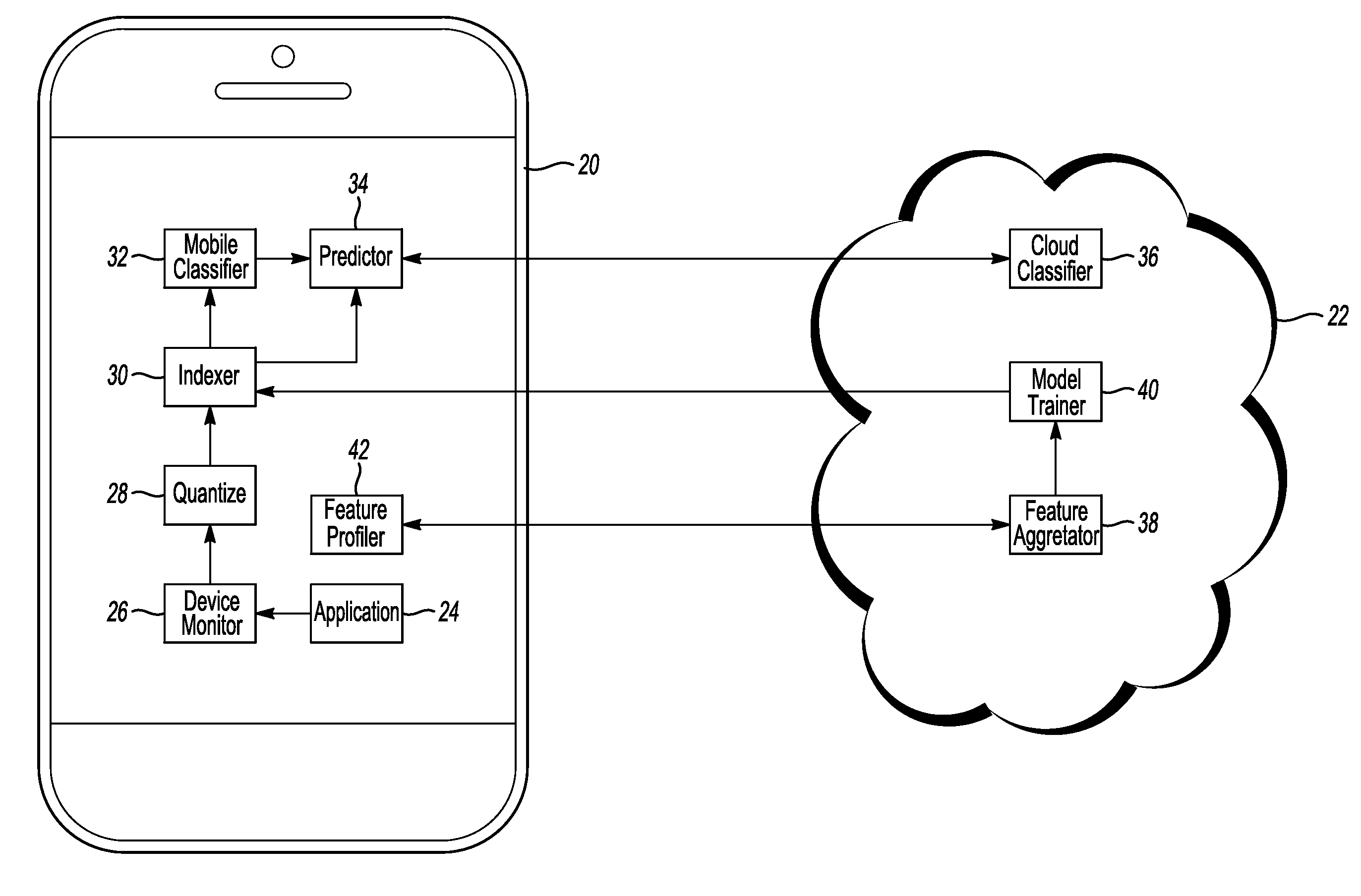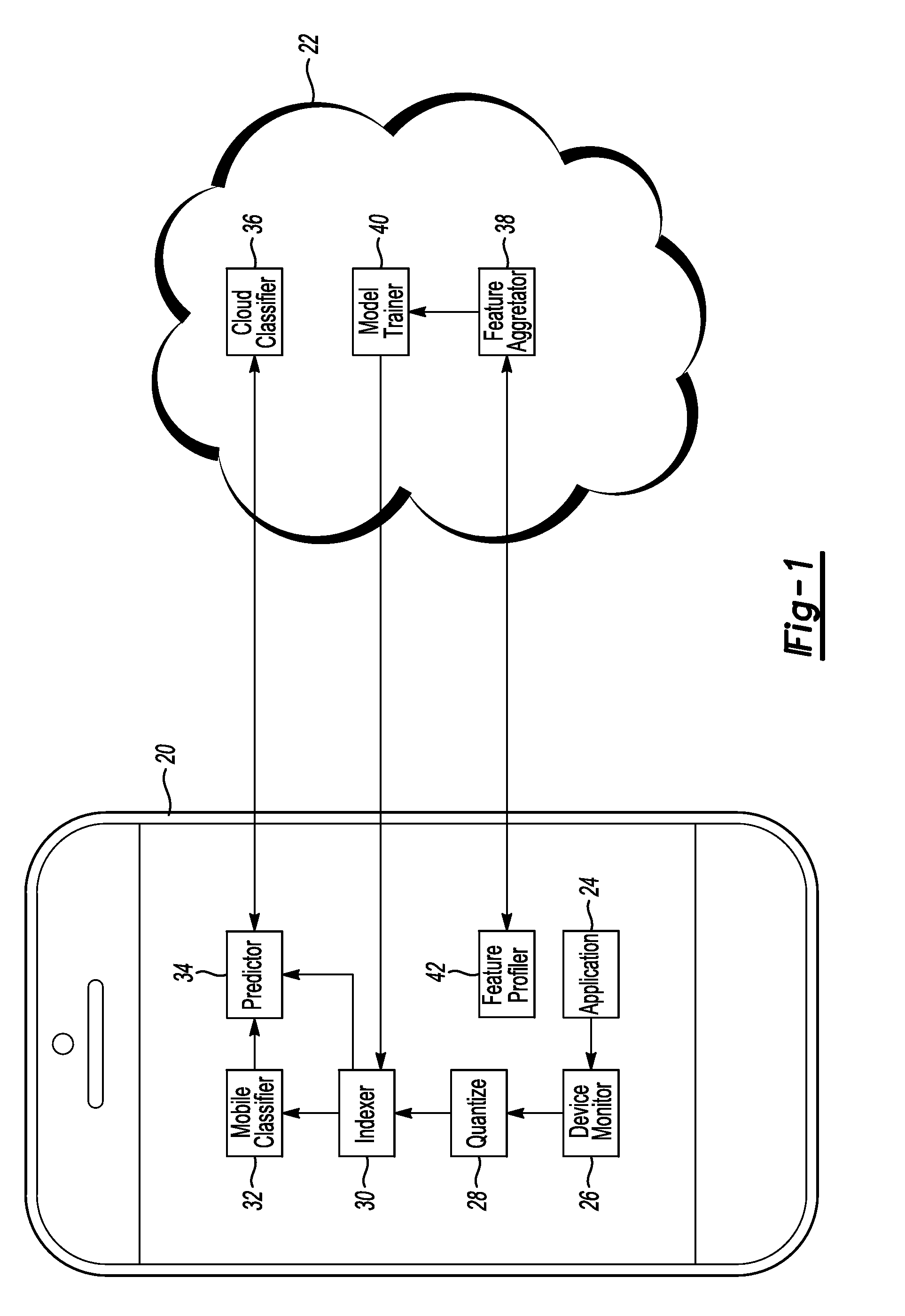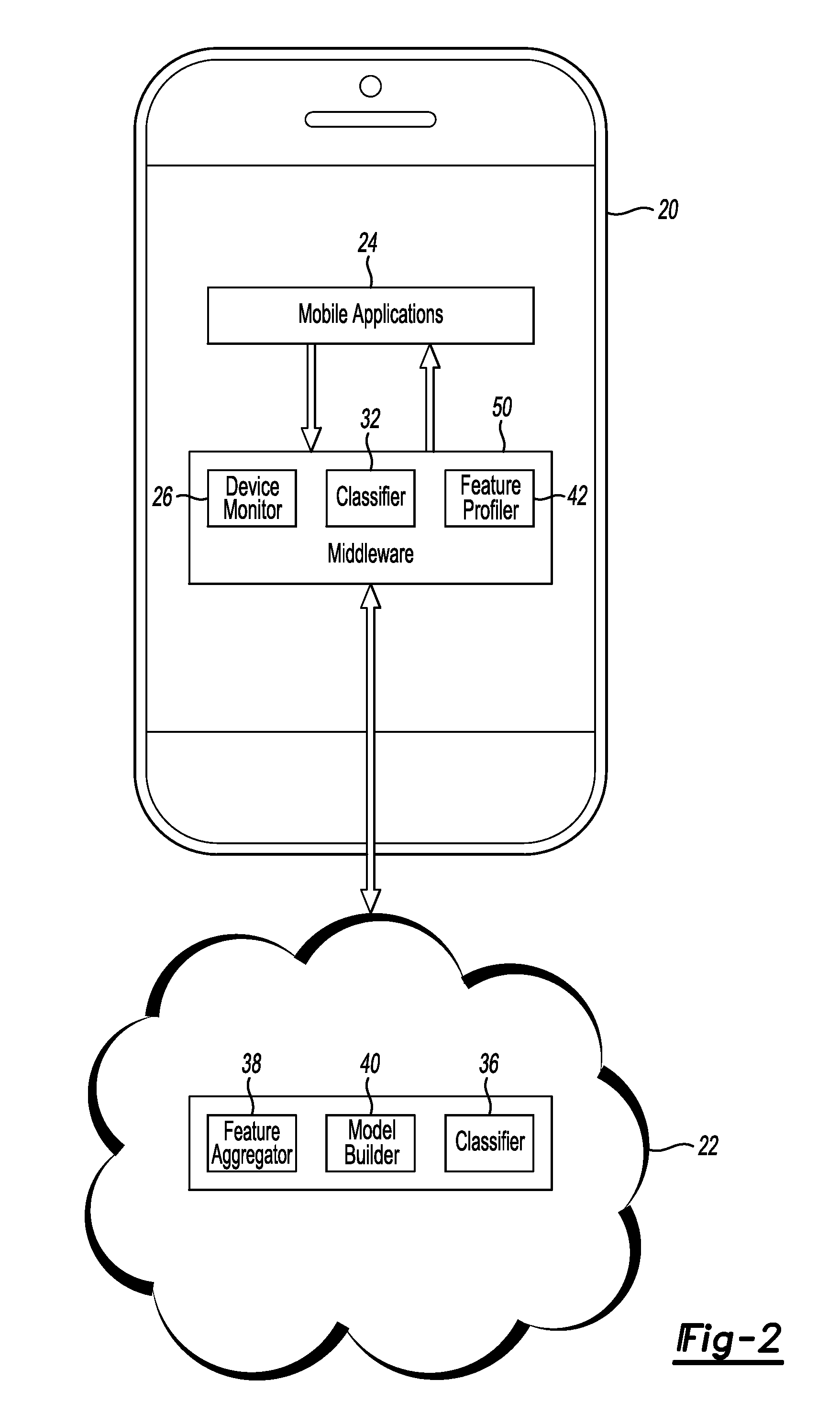Visual information processing allocation between a mobile device and a network
a mobile device and network technology, applied in the field of visual information processing, can solve the problems of slow computation on a mobile device, requiring a significant amount of computing, and quickly using up available battery power
- Summary
- Abstract
- Description
- Claims
- Application Information
AI Technical Summary
Benefits of technology
Problems solved by technology
Method used
Image
Examples
Embodiment Construction
[0013]A mobile device or method as described below facilitates allocating a computing task associated with processing visual information, such as object recognition, between a mobile device and a network with which the mobile device may communicate. The disclosed examples allow for avoiding draining the battery of a mobile device by allocating a visual information processing task to the network when the task would undesirably require a significant amount of a remaining charge on the battery. The disclosed examples also allow for avoiding burdening a network with large amounts of data transfer when it is not necessary to allocate a visual information processing task to the network.
[0014]FIG. 1 schematically illustrates an example mobile device 20 and a network 22 with which the mobile device 20 may communicate. For discussion purposes, the mobile device 20 will be considered a mobile phone with an ability to have visual information at least temporarily stored in a memory of the mobil...
PUM
 Login to View More
Login to View More Abstract
Description
Claims
Application Information
 Login to View More
Login to View More - R&D
- Intellectual Property
- Life Sciences
- Materials
- Tech Scout
- Unparalleled Data Quality
- Higher Quality Content
- 60% Fewer Hallucinations
Browse by: Latest US Patents, China's latest patents, Technical Efficacy Thesaurus, Application Domain, Technology Topic, Popular Technical Reports.
© 2025 PatSnap. All rights reserved.Legal|Privacy policy|Modern Slavery Act Transparency Statement|Sitemap|About US| Contact US: help@patsnap.com



